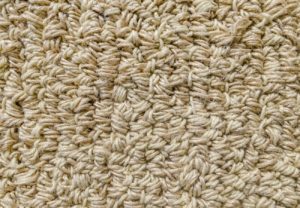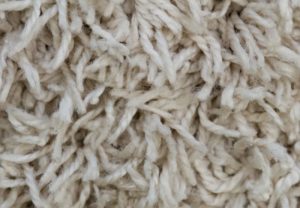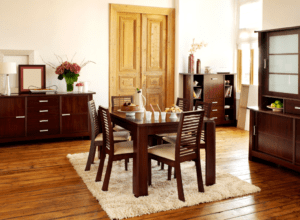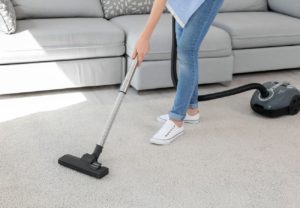

02 Feb Ultimate Guide To Choosing Carpets Sydney & NSW
Choosing the right flooring is strongly dependent on your individual home and preferences. With so many different carpet brands, materials, styles, and colours – choosing carpets can be very difficult! This article will arm you with all the knowledge you need so you can choose the right carpet for your needs.
If you prefer to shop carpets now, feel free to explore our full range of colours and options.
Types of Carpet Materials
Nylon Carpet
Nylon carpets are popular due to its excellent durability, stain-resistance, and maintenance ease. Some estimates say that about two-thirds of synthetic carpets are made of nylon. Nylon also has good resistance to wear, mould, mildew, and rot. Furthermore, it is easy to dye, and will hold its colour for many years to come. Nylon carpets are usually less expensive than wool but are a more expensive carpet type compared to other synthetics. If cared for well, these carpets can last 10 – 20 years. This makes it among the most durable of synthetic fibres.
Shop quality nylon carpets colours online here!
Polypropylene (Olefin) Carpet
Polypropylene is another popular choice for carpeting, and it’s almost as soft as nylon. Being designed as the synthetic alternative to natural wool, it is mainly used in commercial settings but is equally comfortable in residential homes.
The main trouble with polypropylene is that it holds onto oils easily and can be prone to soiling. Despite this, it’s relatively easy to clean, and can even be cleaned with bleach in some cases. Polypropylene is not as tough as nylon, so it’s often used in loop-style carpets. These are sometimes called berbers. Cost-wise, polypropylene is cheaper than most nylon carpets, but more expensive than polyester or acrylic.
Explore affordable polypropylene carpet options here!
Polyester Carpet
Polyester is a synthetic fiber that is hypoallergenic and fade-resistant. This means that it’s an excellent choice for anyone with allergies or who is concerned about carpet wear. It’s also eco-friendly since it can be made from recycled plastic bottles, making this material great for the environment. This fiber is prone to flattening, which isn’t ideal for high-traffic areas or families with kids. It is also prone to oil stains, so be careful where you place it!
A new introduction of super soft polyesters have entered the market in recent years, offering unparalleled softness underfoot that rivals natural wool and triexta ranges.
You can view our polyester carpet options here!
Wool Carpet
A luxurious, natural material with excellent durability, wool is also the softest carpet fiber to find. However, low-quality wool is more susceptible to stains, while high quality wool can be extremely expensive. A solution is to combine it with synthetic fibers in order to create a carpet with the best of both worlds. Wool/acrylic blends are very commonly seen in modern homes.
Wool is a unique material with many great qualities. Wool carpets are chemical-free, which is perfect for those with allergies or sensitivities. However, the natural material is prone to damage from mould and mildew, which feed on organic substances. High humidity and moisture can also cause issues. Ensure wool carpet is professionally cleaned at least bi-annually for the best results.
Shop premium wool carpets with us here!
Triexta Carpet
One of the newest and most innovative carpet fibres available is triexta – known for it’s incredible stain resistance and cloudlike softness in one package. These are more stain resistant than solution-dyed nylon and arguably softer than wool. Furthermore, triexta is renewable as it is made from corn starch which is a readily available resource.
Explore our vast range of triexta colours now!


Types of Carpet Construction
Loop Pile Carpet
With loop pile, the entire yarn loop is left intact on the surface of the piece. This makes it durable, easy to clean, and resistant to stains. It’s perfect for areas with high traffic, like commercial spaces or living rooms. It shouldn’t be exposed to too much moisture, though, as it may cause the pile (the loops of yarn) to shrink.
Loop pile carpet is a rich and plush textured material. The variations of loop pile are endless, from level loop to patterned loops. The loops can be cut or uncut, and they come in a variety of textures and colors. One particular type of loop pile is sisal carpet, because the loops come in different heights and colors. But experts warn how the loops can be a potential snagging hazard for children, so care must be taken.
The image below depicts the loop pile carpets. Notice how the fibres roll back together. This makes them a little more durable than ‘cut pile’ alternatives.


Cut Pile Carpet
For a soft, inviting, and easy-to-clean carpet, consider a cut pile. This style is created by shearing off exposed fibers. The shearing can be done at a different angle to create a new texture. This style comes in many different lengths and thicknesses, and works well for homes that have been fully carpeted as it blends from room to room.
On the downside, cut-pile carpet can be more difficult to clean. However, this can be changed by the twist of the fibers. Although the individual fibers contain a twist that helps the carpet stand up against matting and crushing, some carpets may have less twist than others. The heavier the twist, the more resistant the carpet will be to matting; it also helps create texture that hides wear and dirt.


Pros and Cons of Carpet
Carpet flooring is a great option for many situations, but it’s not perfect. There are pros and cons to be aware of. In this section, we’ll detail the advantages and disadvantages so you know exactly what you’re getting.
Pros
- Carpet has the added bonus of providing a warm underfoot feel while also adding to the overall insulation of your home.
- A good quality carpet is perfect for family homes with children. It can add value and a luxurious feel to any interior space, so it’s an excellent option for any bedroom or living area.
- In addition to being stylish, modern carpets are easy to clean and maintain. They are treated with stain, soil, and fade-resistant properties without losing their softness.
- There are a broad range of carpet styles which can suit traditional or contemporary homes.
- Performance carpets are very durable and can withstand the demands of high-traffic areas in active homes.
Cons
- Carpet can be a problem for those with respiratory challenges, due to a carpet’s tendency to hold dust and other allergens.
- The nature of carpet creates a conducive environment for pests such as dust mites.
- Carpet holds in moisture, which can create mould that could be aggravating to those with allergies.
- Carpets can easily capture stains and odours, especially in households with pets and children.

Carpet Comparisons
With a basic understanding of carpet’s qualities, let’s compare it with some alternate options to see which can be a better fit for you.
Carpet vs Laminate Flooring
Durability
There are a lot of factors that influence the durability of a carpet. For example, a wool rug is going to be much more susceptible to damage than a synthetic one. The softer and/or the higher the pile, the less durable it’s going to be. Laminate flooring is generally more durable, with better scratch and dent resistance as it is made from pressed wood fibres.
Water Resistance
Carpets are generally not waterproof but water-resistant. Laminate floors are also considered water-resistant. This difference means laminate floors and carpets can partially resist water damage, but excess exposure to water will still damage these floors and carpets. Overall, laminate floors tend to resist moisture damage much better than carpet fibres.
Ease of Installation
Installing laminate is a much easier DIY project than installing carpet. But whether you do it yourself or hire a professional, the carpet will need more skill to get it installed. Carpet requires many more different components, including the fact that carpet cannot be installed as a simple floating floor.
Cost
Carpet will typically have a similar cost to laminate floors, which typically cost between $20 – $50 per metre squared. However, with premium wool carpets, the price can soar over $100 a square metre easily.


Carpet vs Hardwood Flooring
Durability
Hardwood flooring has been proven to be the more durable option when compared to carpet. With hardwood flooring, the planks are able to last up to 100 years with sanding and polishing. In contrast, most carpets tend to only last 7 – 15 years or less without needing to be replaced.
Water Resistance
Neither carpet nor hardwood is recommended for damp or constantly humid conditions, such as bathrooms or basement slabs. The backing fabric on the carpet can foster mould and mildew while the wood’s finish can be damaged by water.
Cost
Hardwood floors range from $120-$160 per square metre, but it also includes labour and material. Carpet, on the other hand, ranges from $20-$50 per square meter. Hardwood comes with a higher price tag, but has a higher resale value than carpet and will greatly benefit your home value.


How to Clean Carpet
- Always vacuum the carpet regularly to prevent dirt buildup.
- Clean spills and stains right away; don’t let them sit around for too long.
- Professional cleanings should happen at least once a year.
- Buying a carpet with excellent soil and stain resistance will minimise the effort you need to put in to keep the carpet clean.
Vacuuming
It’s important to vacuum at the correct height. If you set it too low, it can damage your carpet fibres and the vacuum itself. To find the best height for your vacuum, start by setting it up as high as possible. Then lower it until it just gently tugs on the carpet. Slow vacuuming means you can clean more and go deeper within the carpet. Since the brush will agitate the carpet and pull up any unclean bits, slow vacuuming will ensure that your carpets and rugs are much cleaner.






























